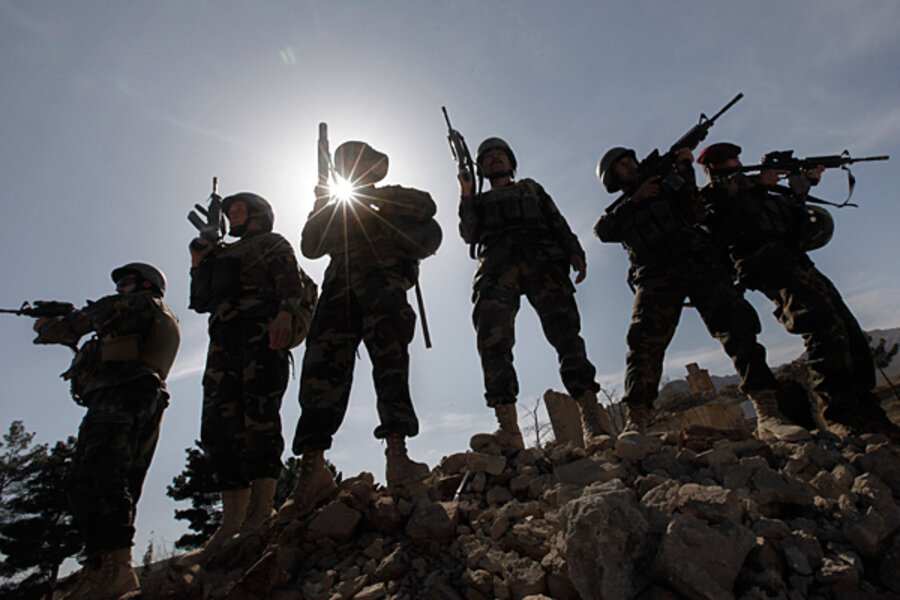Karzai announces Afghan forces ready to take over some provinces
Loading...
| Kabul, Afghanistan
President Hamid Karzai announced Tuesday plans to transition authority of seven areas from international forces to Afghan security forces beginning in July, the first official step in what is likely to be a long and gradual drawdown of foreign forces from Afghanistan ahead of the 2014 deadline to end major combat operations.
The move will test the readiness of the Afghan Army and police to assume control of their country and determine the speed at which other areas can assume responsibility. Still, many of the areas to be transitioned are largely peaceful, leaving observers skeptical that the move will demonstrate the readiness of Afghan security forces to protect civilians in more volatile areas.
A former lawmaker from Kandahar and a retired Army general says that the transition, even in the more peaceful areas of Afghanistan will not succeed because the Afghan government remains ineffective. “The government is also responsible for security, not just the security forces," says Noor-ul-haq Olumi. "Since we have a weak government, it will be useless to take control of the security in any area of the country.”
Karzai made his announcement at a graduation ceremony for Afghan Army officers at the National Military Academy of Afghanistan saying, “We also understand that the people of Afghanistan no longer desire to see others defend their country for them." He added that the transition would be “irreversible” and that he would soon announce the second phase of the transition.
The plan for Phase 1
Afghan forces will assume responsibility for protecting provincial capitals and then gradually take control of the surrounding districts.
The most volatile area named by Karzai in the list of seven was Lashkar Gah, capital of the restive Helmand province. After the surge, Helmand seems to have made much progress, but it will be tested as Afghanistan enters the fighting season. It will likely be the most watched.
Security for the cities of Mazer-e-Sharif, Herat, and Mehterlam will also be handed over to Afghan forces, along with the provinces of Bamiyan northwest of the capital and Panjshir north of Kabul. All of Kabul province, with the exception of the problematic Surobi district will also be transitioned.
The first round of transitions is scheduled to take place in mid-July, which is also the time when international forces have committed to reducing their numbers here. There are currently some 150,000 US and allied forces across Afghanistan's 34 provinces.
It remains unclear how the transition plan will affect the footprint of international forces stationed in Afghanistan and there is no indication that any foreign troops will leave as a result, say International Security Assistance Force officials.
As transition continues and more international forces are freed up by the increased use of Afghan forces, nations will be encouraged to reinvest their forces and stay active in the mission here, says Canadian Army Maj. Eric Chamberland, a spokesman for the International Security Assistance Force. "This may be by committing them to the COIN [counterinsurgency] campaign in another area, or by employing them in another mission such as training and/or advising.”
Response to Karzai's announcement
Afghan security forces say they are confident and prepared to take control of the situation in the regions Karzai announced.
In fact, Afghan security officials say their troops have already taken control of the most peaceful areas unofficially, receiving help from international forces as needed.
“The local government and the people of Helmand are really happy about this announcement, because some years back Helmand was listed as one of the most dangerous and insecure provinces in Afghanistan. Now Lashkar Gah is counted as a city that can be controlled by the Afghans, which means it’s secure,” says Abdul Satar Mirzaqwal, the deputy governor of Helmand province. “Our forces … are ready to take control of this capital city.”





